Scroll to:
Strategies of Equine Helminth Control in the Far East Region of Russia: A Pilot Study
https://doi.org/10.23947/2949-4826-2025-24-2-7-18
EDN: VXHUSB
Abstract
Introduction. Equine helminthiasis, especially in the context of parasite resistance growth, remains an acute issue in the veterinary practices. In Russia, despite the availability of international guidelines, there are still no enough data on the parasite control measures really taken by the veterinary specialists and animal owners. The present pilot study aims at evaluating the level of awareness of horse owners and veterinary specialists about the advanced methods of combating helminth infections, as well as at analysing approaches to deworming and determining the possibility of using targeted treatment strategies in the Far East Region. The main objective is to identify the contradictions between the existing practices and scientific recommendations on prevention of anthelmintic resistance.
Materials and Methods. The study was conducted in September–October 2024 and was based on a questionnaire survey held among horse owners and veterinary specialists in the Far East Region of Russia. Several owners from other regions were interviewed to compare deworming practices. In total, 148 people participated in the survey. Online questionnaires and individual interviews were used to collect data. Questionnaires included the questions about frequency and methods of deworming, the use of diagnostic tests, knowledge about resistance and sources of getting information. To identify statistical relationships, the data were processed using the methods of descriptive statistics, chi-square tests and logistic regression.
Results. In the frame of the study, it was found that in the Far East the methods of interval deworming of horses were the most popular among the horse owners and veterinarians. Respondents were highly aware of the problem of anthelmintic resistance (73.13% among the owners and 78.57% among the veterinarians), but only 17.56% of the owners used the Faecal Egg Count (FEC) prior to deworming. Frequent consultations provided by the veterinarians did not much help to persuade the owners to implement the diagnostic tests or adhere to the quarantine measures. 72.39% of owners and 75% of veterinarians preferred using the macrocyclic lactones, which could exacerbate the risk of anthelmintic resistance development. However, the use of the anthelmintics rotation practices by the majority of owners (82.14%) and veterinarians (71.43%) makes it possible to feel optimistic. Logistic regression has revealed that knowledge on parasitic diseases has a positive effect on the use of FECs.
Discussion and Conclusion. The pilot study revealed the gaps between the knowledge on helminth control methods and their practical implementation. The majority of owners and veterinarians are aware of the problem of anthelmintic resistance, however diagnostic testing remains insufficient. To efficiently combat parasites, it is necessary to increase the quality of consultation services and implement the targeted deworming practices based on diagnostic tests.
Keywords
For citations:
Demkina O.V. Strategies of Equine Helminth Control in the Far East Region of Russia: A Pilot Study. Russian Journal of Veterinary Pathology. 2025;24(2):7-18. https://doi.org/10.23947/2949-4826-2025-24-2-7-18. EDN: VXHUSB
Introduction. The problem of bacterial and parasite resistance to various chemotherapeutic agents is becoming increasingly challenging in recent years. Anthelmintic resistance is not as widely known as antibiotic resistance, but it is a global problem that requires international cooperation and data exchange to develop efficient control strategies [1]. After the information about registering the signs of anthelmintic resistance in equine nematodes was disseminated across the scientific community worldwide, the issues of finding the causes and determining follow-up measures for this phenomenon became urgent [2]. Traditional methods, which include intensive use of anthelmintics and interval treatment without taking into account the diagnostic tests, are no longer efficient for preventing resistance [3]. Currently, equine cyathostomins and Parascaris have been proved to be resistant to benzimidazoles and pyrantel on all six continents. Cases of Parascaris resistance to macrocyclic lactones are also described. Since no new class of anthelmintics has been introduced during the last 40 years, it is important to know the current risk factors of using the antiparasitic agents to maintain their efficacy [4].
The advanced treatment strategies focus on diagnostics and targeted use of medicines. Selective therapy implies treatment of only those horses, which were diagnosed with infestation of high intensity [5]. Key techniques for assessing parasite load and anthelmintic resistance status are the Faecal Egg Count (FEC) and the Faecal Egg Count Reduction Test (FECRT) [6]. These techniques are the gold standard for determining the resistance status in practice, they enable selection of the optimal medicines and reduce the frequency of their use [7].
Surveys aimed at investigating the current helminth control strategies were conducted among the horse owners and veterinarians in a number of countries. The studies revealed that many owners were not fully aware about the new horse treatment methods [8]. The owners in the European part of the world were more keen in following the best practices of anthelmintic resistance control than on the American continent and in island countries (Australia, New Zealand, England, Ireland and Scotland). In Lithuania, at most of the stud farms, pasture rotation and scheduled deworming were the usual practice [9]. On stud farms in Germany, nematode infestation in adult horses decreased as a result of decreased frequency of treatments [10]. In Denmark, 97% of owners, who participated in the survey, used the FEC for diagnosis and monitoring, and 67% regularly changed medicines to prevent resistance [11]. In the United States, only 22% of respondents used Faecal Egg Counts, and less than 10% applied this test regularly [12]. In Australia, only 2.6% of horse owners carried out preliminary diagnostics, and the majority of respondents adhered to the traditional interval treatment method [13]. The surveys conducted in New Zealand revealed that racehorse trainers applied a six-times-a-year treatment schedule, whereas only 20.1% of respondents used the FEC [14]. In Brazil, 95.03% of owners regularly dewormed their animals, however only 54.30% of survey participants sought veterinary advice on the selection of the appropriate anthelmintic [15]. In Ireland, at 81.4% of horse farms, horses were treated 4–5 times a year. In Germany, 74.2% of veterinarians calculated the dosage of a medicine only by visual assessment of horse weights [16]. At horse yards in Scotland, macrocyclic lactones were the most often prescribed medicines; ivermectins and moxidectins were chosen for treatment in 90% of cases [17]. A study in the UK revealed that horse owners’ intention to use the FEC for targeted treatment was influenced by social and veterinary service pressure, rather than by potential risk of animals being infected or resistance development [18].
At present, the issues of implementing the diagnostic tests, the anthelmintics used, their rotation, pasture rotation and other routine measures of preventing and combating equine helminthiasis are relevant for other countries and conditions too. With regard to the Russian Federation, such survey-based studies have never been conducted, although the problem of anthelmintic resistance in horses in Russia has already been recognised [19].
By conducting the survey among the horse owners and veterinary specialists in the Far East, the pilot study is targeted to achieve the following objectives: to assess the level of awareness about the anthelmintic resistance phenomenon; to obtain data on the use of the FEC and its influence on the choice of treatment strategy; to identify contradictions between the current practices of horse deworming and science-based recommendations; to evaluate the communication of the veterinary specialists and horse owners when choosing medicines and treatment strategies; to identify regional differences in preventing and combating helminth infections.
Materials and Methods. The questionnaire survey, conducted in September–October 2024, involved 148 respondents: private horse owners, owners of equestrian clubs, trainers and veterinary specialists living in the Far East Region, and in some other regions (to compare deworming practices). The main method of data collection was an online survey platform. Links to the platform were disseminated via the social networks and equestrian forums. Additional method used was conducting the individual interviews with respondents by completing a paper form.
The horse owner questionnaire included 19 questions, which were divided into thematic sections: general information (number of horses owned, geographic location, use of horses), deworming methods (frequency of using anthelminthics, types of medicines used, pasture management methods, methods of obtaining information on anthelmintics, dosages and timing of deworming, quarantine measures), diagnostic measures (use of the Faecal Egg Count (FEC) prior to deworming, carrying out the diagnostic procedures, influence of results obtained on treatment decisions and awareness (sources of getting information and advice on deworming, knowledge about the problem of anthelmintic resistance, concerns about horse health).
The questionnaire for veterinary specialists included 13 questions divided into sections: general information (geographic location, frequency of work with horses), awareness (knowledge about the problem of anthelmintic resistance), recommended and used methods of helminth control in horses (medicines used, schedules and timing of deworming, use of the FEC before deciding on treatment), communication with horse owners (consulting on equine helminthiasis and on choice of an anthelmintic). Deworming practices were assessed according to the answers received in the questionnaire regarding the frequency of using the anthelmintics, types of medicines used and rotation of anthelmintics. The respondents were asked to indicate the number of times a year they treat their horses against parasites, what medicines they used and whether they rotated them to prevent resistance. In the frame of the survey the questions about the sources of information on the antiparasitic agents, dosages, timing of deworming and quarantine measures were asked. These data were used to assess compliance with the recommended deworming schedules and potential influence on helminth control efficiency. Most questions were closed-ended with multiple choice, in some cases there was an opportunity to express personal opinion in an extra response box. All participants were informed about the aim of the study, voluntary participation and anonymity.
The obtained data were processed in the AtteStat software using the descriptive statistics techniques (mean and median values for numerical variables), comparative analysis (chi-square tests to study the correlation of the factors within and across the groups), logistic regression (creating a model of using the FEC if observing the recommendations). The significance of discrepancies was accepted at a p-value of < 0.05.
Research Results
Descriptive analysis
Usually, deworming is referred to the preventive measures, and its frequency is determined by the animals’ condition, the epizootic situation and the Regulations of the local veterinary services. There are currently no clear instructions in the acting Orders, Rules and Regulations of the Russian Federation stipulating a specific schedule of deworming in horses. The text of the “Veterinary Rules for Keeping Horses for the Purposes of Reproduction, Rearing, Sale, and Use” refers to the veterinary rules, list of anti-epizootic measures and decisions on regionalization1 [20]. The “Veterinary Regulation on the Transportation of Sport Horses on the Territory of the Russian Federation” stipulates the procedure for conducting diagnostic tests and deworming only during transportation of horses2. Thus, the need to evaluate the current helminth control strategies focusing on the extent of their compliance with the science-based recommendations is quite evident.
The total number of respondents, who participated in the survey, was 134 — among the horse owners, and 14 — among veterinary specialists. We planned to conduct the survey in the Far East Region (Amur Region, Khabarovsk and Primorsky Territories, Yakutia, Jewish Autonomous Region), however online links to the survey got disseminated in the other regions and even countries — one horse owner from Belarus and one from Europe took part in the survey (unfortunately, the owner did not specify the country he was from). The questionnaires of owners from other regions were included for comparison of deworming practices. In the “owners” category, 23 questionnaires were incomplete: the number of missing answers varied from one to four, which averaged 11%. Such questionnaires were not excluded from the analysis. Thus, the number of questionnaires suitable for processing equalled to 89%. In the “veterinarians” category, one questionnaire was incomplete with one answer missing, however it was not excluded from the analysis either.
Demographic data
When processing the demographic part of the questionnaires in the “owners” group, the geographic distribution of respondents revealed their concentration in the Far East (63.8%), followed by the Central Russia (30.7%), then the South of Russia, Moscow Region, Bashkortostan, Yakutia, Belarus and a European country (5.5%) (Fig. 1).
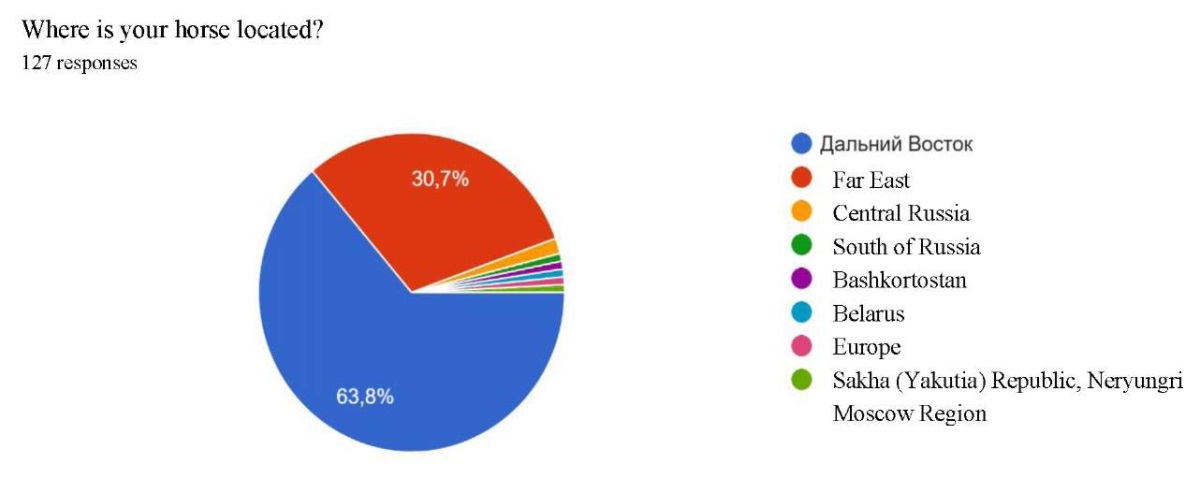
Fig. 1. Geographic distribution of horse owners
In the “veterinarians” group, 35.74% of doctors were geographically located in the Far East, the rest were distributed among other regions (Moscow Region, Moscow, Irkutsk, Khanty-Mansi Autonomous Area, Nizhny Novgorod, Orenburg, Kurgan Region, Tambov Region, Vladimir Region). All veterinarians, who participated in the survey, were constantly (50%) or periodically (50%) working with horses.
Most respondents in the “owners” group identified themselves as private horse owners (87.2%), a smaller part were club managers (7.2%) and trainers (5.6%) (Fig. 2).
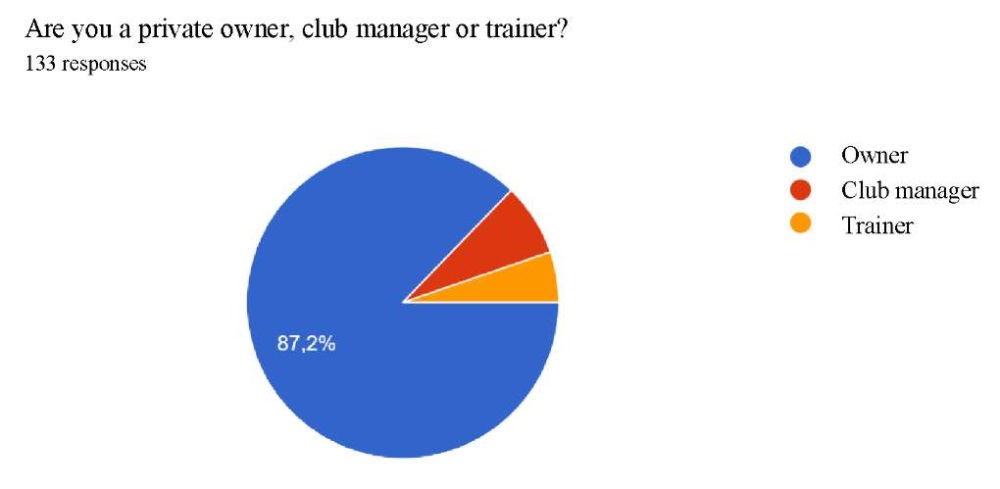
Fig. 2. Identification of respondents
44.44% of owners owned one horse, and 27.41% owned two horses. 28.15% of respondents owned more than three horses, of which 8 people owned 10–25 horses, and one had a herd of 100 horses. Five trainers and one club manager answered that they did not own horses.
By the conditions of keeping horses, the answers had distributed as follows: 59.7% of horses were kept in equestrian clubs; 32.09% — on the private farms and farmsteads; 8.21% — in herds.
Awareness of respondents
When answering the questions about the level of knowledge on equine parasitic diseases, about harm they can have to the health of animals and the problem of anthelmintic resistance in horse breeding, the majority of owners (98%) said that they understood the harm of helminthic diseases to the health of horses. Awareness of the anthelmintic resistance was high in both groups of respondents: 78.57% of veterinarians were aware of the problem, whereas some contradiction was found in the owners group: 73.13% responded that they were familiar with anthelmintic resistance as a highly specific problem for horse breeding, but when it came to answering a control question about parasitic diseases, 66.4% of owners responded that their knowledge in this area was limited, 5.2% knew nothing, and only 28.4% were well informed (Fig. 3).
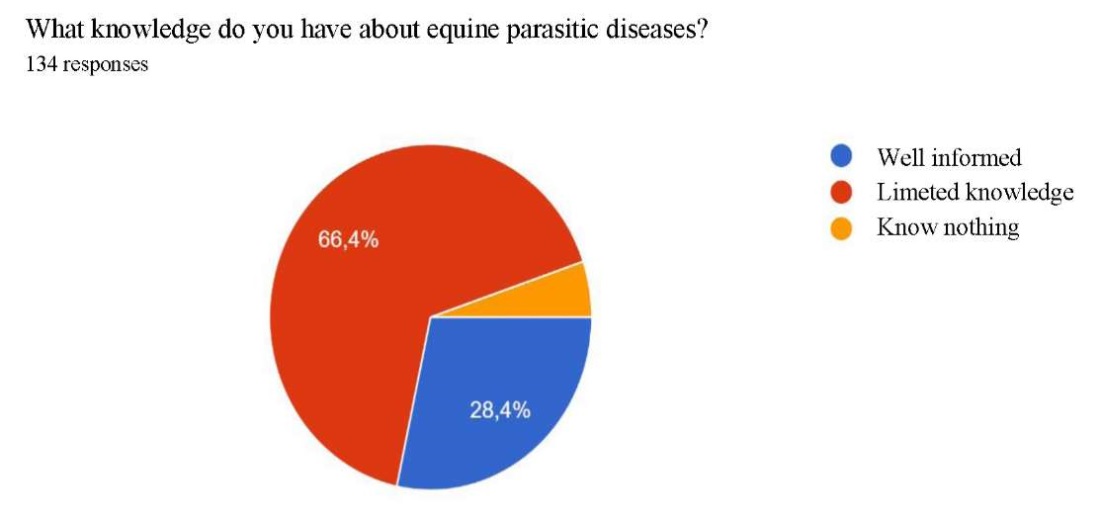
Fig. 3. Owners’ awareness of equine parasitic diseases
Deworming Practices
The questions of this section were aimed at identifying the schedule of deworming, the use of drug rotation, and the types of anthelmintics. In the “owners” group, 49.2% of respondents treated their horses twice a year, in spring and autumn; 42.4% — four times a year; 6.6% — once a year; and 1.8% — did not do this at all (Fig. 4).
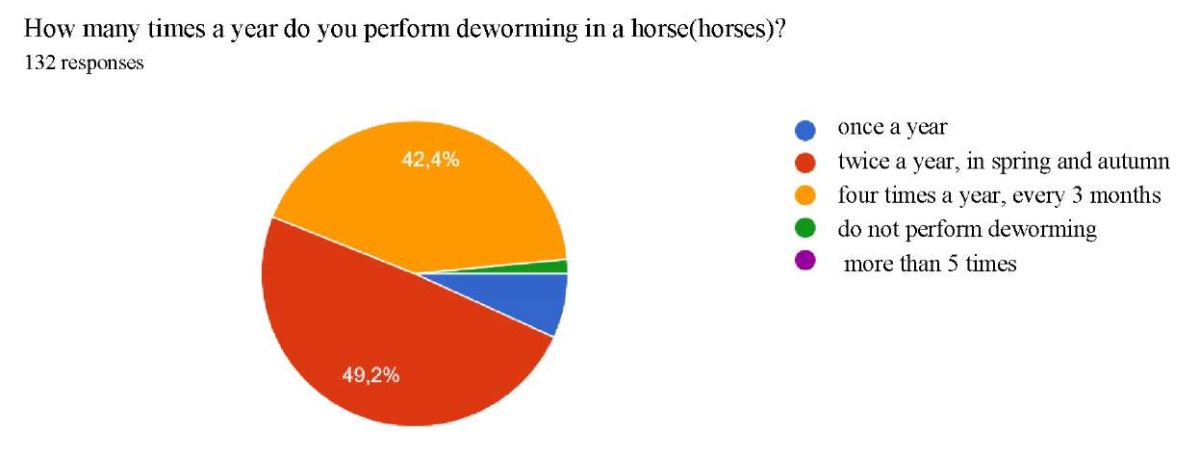
Fig. 4. Horse deworming schedules used by the owners
Among veterinarians, the approach to treatment of horses suffering from helminthic diseases was rather different: 50% performed and recommended deworming four times a year; 35.7% – twice a year; 7.1% — three times a year; 7.2% — 3–4 times a year (Fig. 5).
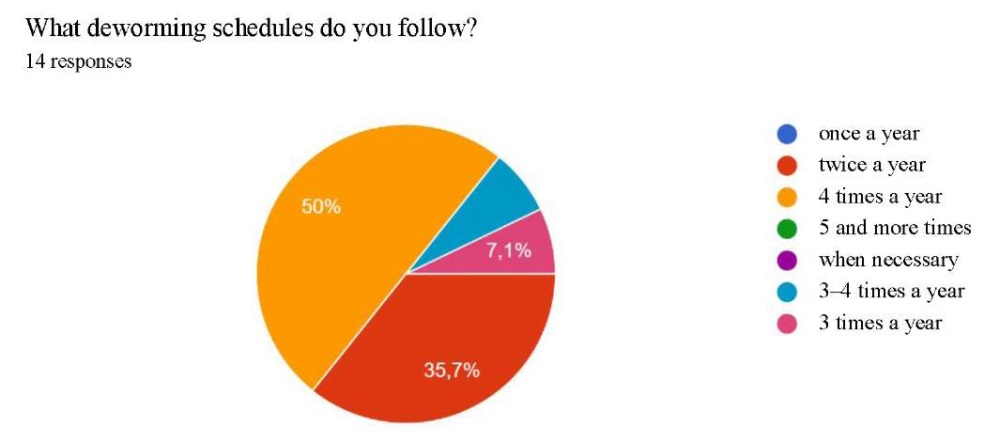
Fig. 5. Horse deworming schedules used by the veterinarians
Of the therapeutic agents, 75% of veterinarians preferred using macrocyclic lactones. However, in an open-ended question, most doctors indicated that in addition to lactones, they also used anthelmintics of other groups (tetrapyrimidines, benzimidazoles, pyrazinoisoquinolines). Two doctors used only lactones, two — only tetrapyrimidines. Such active use of lactones by the veterinarians goes in compliance with the global trends, and, at the same time, raises concerns about the possibility of resistance development due to frequent use [21]. Among horse owners, ivermectin-containing drugs proved to be also popular, with 72.39% using them on a regular basis. Anthelmintics of other groups were preferred by 12% of horse owners, who participated in the survey. 15.67% of respondents did not know, what medicine was used to treat their horses. Bearing in mind that the main part of the study sample was represented by the livestock in private ownership, in the future, constant monitoring of the therapeutic efficacy of macrocyclic lactones and possible use of alternative anthelmintics, where necessary, is desirable.
To calculate the dosage of anthelmintics, the owners commonly determined the horse’s weight by visual inspection, by eye. This method was used by 59.5% of respondents. This popular method of calculating the dosage can lead to overestimation or underestimation of the required amount of the medicine for treatment [22]. Only 13.7% of owners used scales to determine the exact weight of horses, and 26.7% used a measuring tape for calculations.
Communication of veterinarians and owners
The questionnaires included questions on consultating, seeking consultation, and impact of consultations on the diagnostic procedures, choice of an anthelmintic, and quarantine decisions. The majority of owners (80%) said they consulted with veterinarians. Veterinarians also reported about providing regular consultations to the owners on prevention of equine helminthiasis (92.86%).
The majority of veterinarians reported to be aware of the anthelmintic resistance problem, but only half of those who participated in the survey performed the FEC prior to deworming (52.86%) and recommended this to the owners (50%). Although, the majority of the owners claimed being aware of the problem of anthelmintic resistance, only 17.56% of respondents noted performing the FEC prior to deworming; 6.14% did not know the reason for diagnostic testing of a horse; 76.3% did not perform the diagnostic tests because no one offered them. Only 14.5% of the owners received recommendations from the veterinarians to perform the necessary diagnostics to enable optimal selection of an anthelmintic. However, veterinarians noted that in 85.71% of cases, the owners sought their advice on purchasing a medicine without preliminary diagnostics.
Only 32.3% of the owners buy medicines for treating horses based on the advice of the veterinarians, the remaining 67.7% use information from the Internet, advice of other horse owners, trainers, or did not participate in choosing an anthelmintic because the club purchased the medicine for all horses at once (Fig. 6).
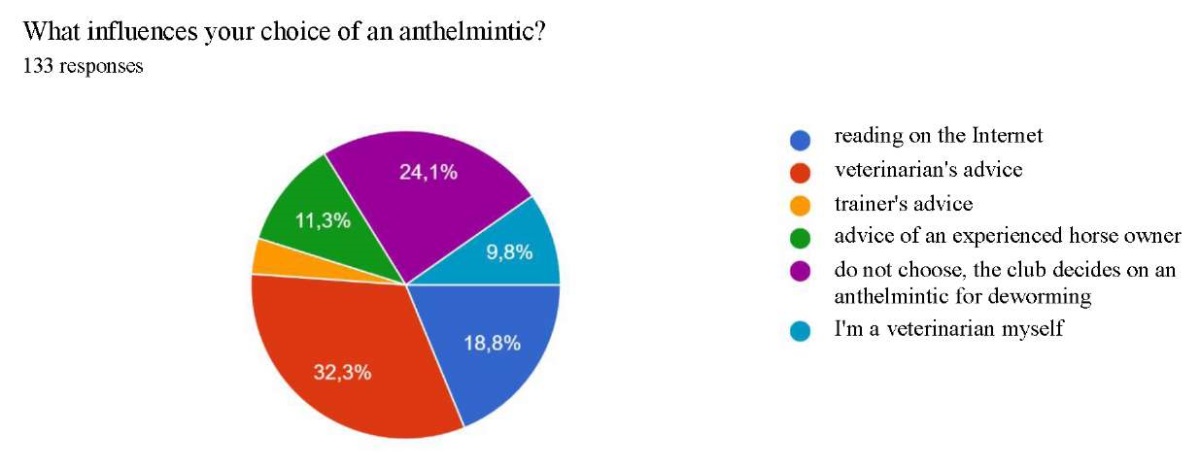
Fig. 6. Sources of information used by the owners for choosing an anthelmintic
Measures for the prevention and control of helminthiasis
Despite the consultative communication, such an important measure as quarantine of newly arrived animals was often neglected — 85.71% of veterinarians answered negatively to the question about the owners adhering to quarantine. However, horse owners took care of daily cleaning of horse loose boxes (95%) and rotation of pastures (65%) for reducing the parasite load. Despite the preference for lactones, a high percentage of horse owners (82.14%) and veterinarians (71.43%) reported about rotating the anthelmintics. This method is recommended for reducing the risk of resistance development, although its efficacy depends on correct application and compliance with recommendations.
When asked a question: “Is it necessary to replace the traditional horse deworming schedule (2 or 4 times a year) by an individual one (depending on the parasite load)?”, 37.5% of the veterinarians answered positively, and 35.7% answered that the change of the approach would be impossible due to additional costs for the owners and a time delay. It has to admitted, for horse owners, changing traditional treatment and prevention schedules can result in additional costs on diagnostics. This is one of the reasons why only 42% of the owners, who participated in the survey, considered implementation of new deworming schedules to be expedient, while 58% were quite satisfied with the current situation.
Statistical processing of the obtained data
The questions and answers about the number of horses owned were processed using descriptive statistics. The mean value, confidence intervals and median value were calculated (Table 1).
Table 1
Descriptive statistics data on the number of horses owned by the owners
|
Sample size |
Mean |
Lower Confidence Bound, 95% |
Upper Confidence Bound, 95% |
Median |
|
134 |
3,4 |
1,8 |
5,0 |
1 |
The obtained median indicates that half of the owners have one or less horses, which reflects the central tendency for the sample. The obtained data are distributed asymmetrically, the mean is significantly higher than the median. This confirms the presence of several owners with a large number of horses in the sample. Confidence intervals show that with a 95% probability, the true mean number of horses for each owner in the general totality is between 1.8 and 5.0.
To compare and ascertain the statistical significance of parameters within the groups, the data were processed using the chi-square test. A threshold for statistical significance was set at a 0.05 p-value. For the “owners” group, it was found, how the factor of awareness of parasitic diseases was related to the other factors that were important for the development of resistance (Table 2).
Table 2
Relationship between the awareness of equine parasitic diseases and various factors: results of the analysis obtained among the owners using the chi-square test
|
Factor |
chi-square |
p-value |
Statistical significance |
|
Performing the FEC prior to deworming |
5,32 |
0,021 |
yes |
|
Seeking veterinarian’s advice |
3,14 |
0,077 |
no |
|
Rotation of anthelmintics |
2,47 |
0,116 |
no |
|
Regular rotation of pastures |
4,68 |
0,030 |
yes |
|
Regular cleaning of horse loose boxes |
1,92 |
0,165 |
no |
|
Understanding the need of changing a deworming schedule |
6,09 |
0,014 |
yes |
|
Use of ivermectins |
24,95 |
< 0,001 |
yes |
Significant results (p < 0.05) were obtained for the following factors: performing the FEC prior to deworming, regular pasture rotation, need to change the deworming schedule and use of Ivermectin by the owners. The owners who have knowledge on equine parasitic diseases understand the importance of diagnostic tests and pasture rotation for reducing helminth egg contamination. However, despite their knowledge, such owners use Ivermectin more intensively to deworm horses and do not see the need to rotate the medicines. Regular cleaning of loose boxes did not prove its relation to the knowledge on parasitic diseases. The routine nature of this procedure, must have prevented the owners from relating it to solving the problem of animal infestation. The owners did not receive their knowledge from veterinarians — no statistical relationship between these two factors was found. This opens up prospects for improving consultative communication.
To identify statistically significant differences in horse deworming practices used by the owners from different regions, Analysis of Variance (ANOVA) was used to determine whether the approach to deworming differed across the regions. For this purpose, the answers to the questions “How many times a year do you perform deworming?” and “Where is your horse kept?” were used. The null hypothesis was the statement that the mean values of deworming frequency are the same in all regions. After processing the data, we obtained the following results: F-statistics: 1.19 and p-value: 0.073. Since the p-value is greater than the significance level (0.05), we cannot reject the null hypothesis. This means that although there may be some small differences in the frequency of procedures across the regions, they are not big enough to be considered statistically significant. Owners in all the regions have similar deworming practices.
To establish a statistical relationship of the factors between the “owners” and “veterinarians” groups, the answers to the questions were analysed using the chi-square test. Due to the small sample in the “veterinarians” group, it would be more appropriate to use the Fisher’s criterion for statistical processing, however not all the answers in both groups were binary, which does not meet the requirements for using this criterion (Table 3).
Table 3
Relationships of the factors for conducting the diagnostics and treatment between the “veterinarians” and “owners” groups
|
Factors |
chi-square test |
p-value |
|
|
veterinarians (n=14) |
owners (n=134) |
||
|
Performing FEC |
|||
|
Do you perform FEC prior to deworming? |
Have you ever performed FEC prior to deworming? |
3,827 |
0,0504 |
|
Recommendation and use of FEC |
|||
|
Do you suggest the owners to perform FEC prior to deworming? |
Have you ever performed FEC prior to deworming? |
0,0 |
1,0 |
|
Frequency of deworming |
|||
|
How many times a year do you perform deworming? |
How many times a year do you perform deworming? |
10,73 |
0,0133 |
The veterinarians and the owners have different attitudes towards performing the FEC prior to deworming, even though the difference reached the threshold of statistical significance. No statistically significant relationship was found between the recommendation of the veterinarians to perform the FEC and its actual performing by the owners. Possibly, that was because the owners did not always follow the recommendations, or the recommendations did not affect significantly their behaviour. Statistically significant differences were found between the veterinarians and the owners in the frequency of deworming in the schedules used: the value of 10.73 means that the veterinarians and the owners have different approaches to this issue.
To forecast FEC performing by the owners under the influence of various factors, a logistic regression model was built. The variable value in this model was the FEC, and the constant values were awareness of parasitic diseases and resistance, as well as seeking veterinarian’s advice for choosing an anthelmintic (Table 4).
Table 4
Logistic model indicators of FEC performing by the owners under the influence of the factors
|
Factors |
Coefficients |
Influence |
Model accuracy |
|
Knowledge on equine parasitic diseases |
0,334 |
positive |
87 % |
|
Awareness of the problem of anthelmintic resistance |
0,104 |
weak positive |
|
|
Consultations with veterinarians |
-0,036 |
weak negative |
The positive coefficient of knowledge on parasitic diseases means that the better the owner’s knowledge, the higher is probability of performing FEC by him. The anthelmintic resistance awareness factor has a weak positive coefficient indicating its small effect on the probability of performing FEC. The owners were aware of resistance but might not understand the importance of regular testing. Consultation with veterinarians reduced the probability of performing FEC. This could be due to the fact that the owners relied on drug recommendations received and saw no need in diagnostic testing. This logistic regression model forecasts with 87% accuracy that as the effects of the factors increase, the owners will more often perform diagnostic tests in horses prior to deworming.
Discussion and Conclusion. This pilot study aimed to evaluate the existing helminth control practices used by the horse owners and veterinary specialists in the Russian Far East. The obtained results indicate predominance of the traditional deworming practices among the veterinarians and horse owners consisting of the routine interval treatments. Such kind of an interval schedule is considered a factor contributing to the development of parasite resistance to anthelmintics.
Despite the high level of awareness of anthelmintic resistance in both groups, there is a significant gap between the knowledge and implementation of the science-based strategies, such as the use of the Faecal Egg Count (FEC) prior to deworming. Only 17.56% of the owners performed the FEC prior to deworming, and just over half of veterinarians performed the FEC or recommended it to be performed prior to treatment. Consultations of the owners with veterinarians, do not significantly affect owners’ adherence to diagnostic testing or quarantine. It makes feel optimistic that major part of the owners and veterinarians reported using drug rotation, however, in the absence of diagnostic tests, which should be a basis for making decisions on treatment and drug selection, mere rotation becomes insufficient for reducing the risk of resistance development.
The owners usually estimate the weight of their horses visually when calculating the medicines, which can lead to incorrect dosage and reduce the efficacy of therapy. Excessive use of macrocyclic lactones by the owners and veterinarians can accelerate the emergence of resistant parasite populations.
The statistical processing of data allows us to make several significant conclusions. Descriptive statistics showed that half of the private owners, who participated in the survey, owned one horse, and the other half owned more than three horses. The average number of horses in the general totality with a probability of 95% is within 1.8–5.0.
Analysis using the chi-square criterion revealed statistically significant relationships between performing FEC prior to deworming, regular pasture rotation, the need to change deworming schedules and the use of Ivermectin (p < 0.05) in the group of owners who have knowledge on parasitic diseases. Aware owners more often perform the diagnostic tests and understand the importance of pasture rotation for reducing the level of infestation. The widespread use of Ivermectin indicates the gaps in understanding importance of comprehensive approaches to helminthiasis prevention and control. The lack of correlation between veterinarians’ consultations and the level of owners’ knowledge highlights the importance of improving communication.
Analysis of Variance (ANOVA) (F=1.19, p=0.073) showed absence of any significant differences in the frequency of deworming accepted among the owners from different regions.
Comparison of the “owners” and “veterinarians” groups showed that differences in performing FEC are close to statistical significance. At the same time, a weak relationship was found between the recommendations of the veterinary specialists to perform FEC and actual performing the test by the owners. Between the groups, frequency of deworming differs more significantly.
Logistic regression showed that knowledge on parasitic diseases has a positive effect on the probability of performing FEC, whereas the awareness of resistance and consultations with veterinarians have a weak effect. The model with an accuracy of 87% allows us to forecast that the owners will more often conduct diagnostics prior to deworming in case the significance of these factors increases.
The following limitations of this study should be mentioned: relatively small number of respondents, which makes it difficult to apply the generalized results to a wider sample, and does not fully reflect the general totality. Using questionnaire data may also cause an inaccuracy, as participants may have misrepresented the real data perceiving them to be “incorrect” and indulge in wishful thinking. In addition, the data obtained reflect the status quo at the time of the study and do not reflect changes over time. Future survey studies should expand the scope of topics covered by the questions and statistical methods for data processing to gain a more detailed understanding of the situation.
The findings revealed the need to increase the level of knowledge among the owners, implement the targeted methods of deworming preceded by the diagnostic tests, calculate the drug dosage based on the accurate weight measurements, and adhere to quarantine measures. The veterinary specialists play a leading role in communication with the owners, therefore strengthening partnership is required for efficient combating the parasites. In conclusion, it should be noted that the present study was a pilot one and can be used as a basis for studying the current situation with the methods of diagnostics, prevention, and control of parasitic diseases in animals in other regions.
1. On the Approval of the Veterinary Rules for Keeping Horses for the Purposes of Reproduction, Rearing, Sale, and Use. Order No. 939 of December 26, 2023. (In Russ.) URL: http://publication.pravo.gov.ru/document/0001202402070015 (accessed: 07.06.2025).
2. Veterinary Regulation on the transportation of sport horses on the territory of the Russian Federation. (Adopted by the Ministry of Agriculture of Russia on September 28, 2005). (In Russ.) URL: https://www.consultant.ru/law/podborki/veterinarnye_pravila_peremescheniya_sportivnyh_ loshadej_po_territorii_rossijskoj_federacii/(accessed: 07.06.2025).
References
1. Nielsen MK. Anthelmintic Resistance in Equine Nematodes: Current Status and Emerging Trends. International Journal for Parasitology: Drugs and Drug Resistance. 2022;20:76–88. https://doi.org/10.1016/j.ijpddr.2022.10.005
2. Gehlen H, Wulke N, Ertelt A, Nielsen MK, Morelli S, Traversa D, et al. Comparative Analysis of Intestinal Helminth Infections in Colic and Non-Colic Control Equine Patients. Animals. 2020;10(10):1916. https://doi.org/10.3390/ani10101916
3. Stratford CH, Lester HE, Pickles KJ, McGorum BC, Matthews JB. An Investigation of Anthelmintic Efficacy against Strongyles on Equine Yards in Scotland. Equine Veterinary Journal. 2014;46(1):17–24. https://doi.org/10.1111/evj.12079
4. Cai E, Wu R, Wu Yu, Gao Yu, Zhu Yi, Li J. A Systematic Review and Meta-Analysis on the Current Status of Anthelmintic Resistance in Equine Nematodes: A Global Perspective. Molecular and Biochemical Parasitology. 2024;257:111600. https://doi.org/10.1016/j.molbiopara.2023.111600
5. Boelow H, Krücken J, von Samson-Himmelstjerna G. Epidemiological Study on Factors Influencing the Occurrence of Helminth Eggs in Horses in Germany Based on Sent-in Diagnostic Samples. Parasitology Research. 2023;122(3):749–767. https://doi.org/10.1007/s00436-022-07765-4
6. Kaplan RM, Denwood MJ, Nielsen MK, Thamsborg SM, Torgerson PR, Gilleard JS, et al. World Association for the Advancement of Veterinary Parasitology (W.A.A.V.P.) Guideline for Diagnosing Anthelmintic Resistance Using the Faecal Egg Count Reduction Test in Ruminants, Horses and Swine. Veterinary Parasitology. 2023;318:109936. https://doi.org/10.1016/j.vetpar.2023.109936
7. Osterman-Lind E, Hedberg Alm Y, Hassler H, Wilderoth H, Thorolfson H, Tydén E. Evaluation of Strategies to Reduce Equine Strongyle Infective Larvae on Pasture and Study of Larval Migration and Overwintering in a Nordic Climate. Animals. 2022;12(22):3093. https://doi.org/10.3390/ani12223093
8. Easton S, Pinchbeck GL, Tzelos T, Bartley DJ, Hotchkiss E, Hodgkinson JE, et al. Investigating Interactions between UK Horse Owners and Prescribers of Anthelmintics. Preventive Veterinary Medicine. 2016;135:17–27. https://doi.org/10.1016/j.prevetmed.2016.10.017
9. Dauparaitė E, Kupčinskas T, Hoglund J, Petkevičius S. A Survey of Control Strategies for Equine Small Strongyles in Lithuania. Helminthologia. 2021;58(3):225–232. https://doi.org/10.2478/helm-2021-0031
10. von Samson-Himmelstjerna G, Fritzen B, Demeler J, Schürmann S, Rohn K, Schnieder T, et al. Cases of Reduced Cyathostomin Egg-Reappearance Period and Failure of Parascarisequorum Egg Count Reduction Following Ivermectin Treatment as Well as Survey on Pyrantel Efficacy on German Horse Farms. Veterinary Parasitology. 2007;144(1–2):74–80. https://doi.org/10.1016/j.vetpar.2006.09.036
11. Becher AM, van Doorn DC, Pfister K, Kaplan RM, Reist M, Nielsen MK. Equine Parasite Control and the Role of National Legislation — A Multinational Questionnaire Survey. Veterinary Parasitology. 2018;259:6–12. https://doi.org/10.1016/j.vetpar.2018.07.001
12. Nielsen MK, Branan MA, Wiedenheft AM, Digianantonio R, Scare JA, Bellaw JL, et al. Risk Factors Associated with Strongylid Egg Count Prevalence and Abundance in the United States Equine Population. Veterinary Parasitology. 2018;257:58–68. https://doi.org/10.1016/j.vetpar.2018.05.006
13. Beasley AM, Kotze AC, Barnes TS, Coleman GT. Equine Helminth Prevalence and Management Practices on Australian Properties as Shown by Coprological Survey and Written Questionnaire. Animal Production Science. 2020;60(18):2131–2144. https://doi.org/10.1071/AN18378
14. Rosanowski SM, Scott I, Sells PD, Rogers CW, Bolwell CF. Cross-Sectional Survey of Parasite Control Practices on Thoroughbred and Standardbred Training Yards in New Zealand. Equine Veterinary Journal. 2016;48(3):387–393. https://doi.org/10.1111/evj.12558
15. Medeiros PR, Figueiredo LS, de Melo UP, Mariz ALB, de Brito EL, Araújo IRDS, et al. Survey on Sanitary Practices and Knowledge about Infectious Diseases among Equine Owners in the State of Rio Grande do Norte, Brazil. Brazilian Journal of Veterinary Medicine. 2023;45: e003323. https://doi.org/10.29374/2527-2179.bjvm003323
16. Hinney B, Wirtherle NC, Kyule M, Miethe N, Zessin KH, Clausen PH. A Questionnaire Survey on Helminth Control on Horse Farms in Brandenburg, Germany, and the Assessment of Risks Caused by Different Kinds of Management. Parasitology Research. 2011;109(6):1625–1635. https://doi.org/10.1007/s00436-011-2434-0
17. Stratford CH, Lester HE, Morgan ER, Pickles KJ, Relf V, McGorum BC, et al. A Questionnaire Study of Equine Gastrointestinal Parasite Control in Scotland. Equine Veterinary Journal. 2014;46(1):25–31. http://doi.org/10.1111/evj.12101
18. Rose Vineer H, Vande Velde F, Bull K, Claerebout E, Morgan ER. Attitudes towards Worm Egg Counts and Targeted Selective Treatment against Equine Cyathostomins. Preventive Veterinary Medicine. 2017;144:66–74. https://doi.org/10.1016/j.prevetmed.2017.05.002
19. Panova OA, Arkhipov IA, Baranova MV, Khrustalev AV. The Problem of Anthelmintic Resistance in Horse Breeding. Russian Journal of Parasitology. 2022;16(2):230–242. (In Russ.) https://doi.org/10.31016/1998-8435-2022-16-2-230-242
20. Nielsen MK, Leathwick DM, Sauermann CW. Shortened Strongylid Egg Reappearance Periods in Horses Following Macrocyclic Lactone Administration — The Impact on Parasite Dynamics. Veterinary Parasitology. 2023;320:109977. https://doi.org/10.1016/j.vetpar.2023.109977
21. McTigue FE, Mansbridge SC, Pyatt AZ. Equine Anthelmintic Resistance: Horse Owner and Yard Manager Perception of the Barriers Affecting Strategic Control Measures In England. Veterinary Sciences. 2022;9(10):560. https://doi.org/10.3390/vetsci9100560
About the Author
O. V. DemkinaRussian Federation
Olga V. Demkina - Cand. Sci. (Veterinary Medicine), Associate Professor of the Veterinary and Sanitary Expertise, Epizootology and Microbiology Department, Faculty of Veterinary Medicine, Zootechnics and Biotechnology.
86 Polytechnicheskaya Str., Blagoveshchensk, Amur Region, 675005
The study evaluated the methods of horse deworming and degree of awareness of anthelmintic resistance problem. The results showed poor use of diagnostic FEC tests prior to deworming despite high awareness of the problem. A significant proportion of owners use visual assessment of horse weight to calculate drug dosages. It is important to improve communication between veterinarians and owners to implement the science-based strategies of helminth control. The need to enhance the approaches to prophylaxis and rational use of anthelmintics is highlighted.
Review
For citations:
Demkina O.V. Strategies of Equine Helminth Control in the Far East Region of Russia: A Pilot Study. Russian Journal of Veterinary Pathology. 2025;24(2):7-18. https://doi.org/10.23947/2949-4826-2025-24-2-7-18. EDN: VXHUSB


























